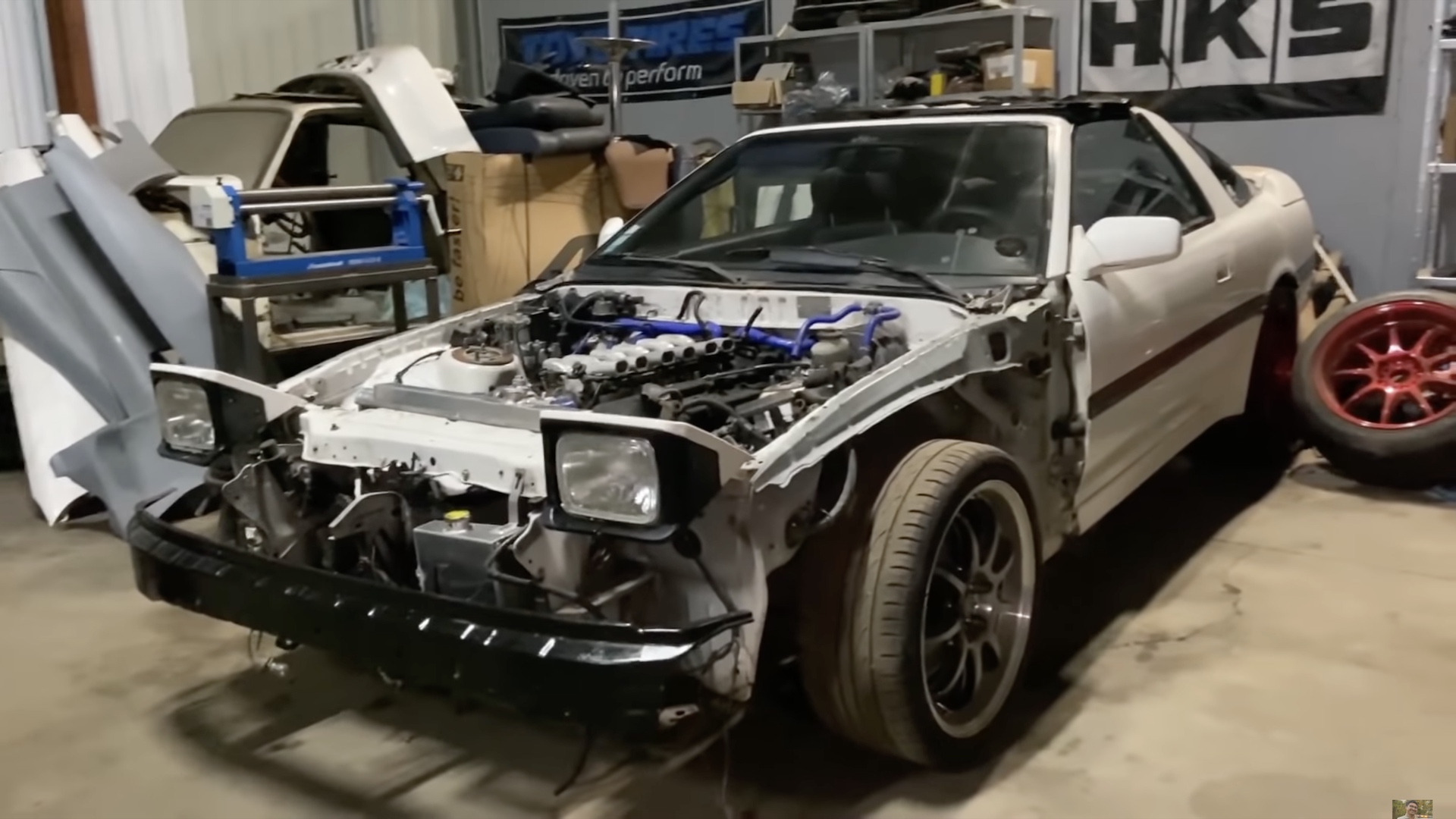

Swapping a V12 into a car not designed to fit one is as big an undertaking as it sounds. Perhaps bigger, actually, as Mk3 Toyota Supra (MA70) owner Hugo de la Vega has learned in the process of fitting a Toyota Century’s 5.0-liter V12 to his Supra track car.
De la Vega, who has documented the build on his Instagram @thev12supra.mk3, told The Drive that a V12 has been on the agenda since he and his friends rebuilt his car’s original inline-six. He told them that if the engine were to ever go pop, he’d exchange it for the 1GZ-FE, the V12 from Toyota’s range-topping JDM luxury sedan. That turned out to be prophetic, as he accidentally dropped a washer down a cylinder while changing spark plugs, grenading the engine. So began the V12 swap, which was about to get more complicated than anyone could’ve bargained for.
For starters, de la Vega had to import a donor engine from Japan to Bordeaux, France. Ordinarily, that’s not the trickiest process, but it ended up being delayed by the combo of COVID and the Ever Given blocking the Suez Canal. It took five months for the V12 to arrive, and once it did, a test fit revealed the difficulty of cramming it into a Supra.
Though the Supra’s engine bay was designed for an engine of the V12’s length, it wasn’t built to accommodate its width, which meant the starter fought the driver-side exhaust manifold for space. The only solution was to redesign the manifold and construct it with the engine in place, a process that de la Vega said took about 45 hours. Then came fitting the steering rack in with the oil pan and subframe. De la Vega didn’t want to redesign the subframe or relocate the steering rack, so he designed his own dry-sump oiling system, eating up another 60 hours.
The intake too proved a problem, as while a pair of adapted aluminum 2JZ-GTE intake plenums worked, de la Vega wasn’t satisfied with them. At the suggestion of a friend, he replaced them with an individual throttle body setup, one using a combination of VW Beetle carburetors and a custom throttle linkage. That took 50 hours to build.
Mercifully, there was an off-the-shelf bell housing for adapting the V12 to the Supra’s stock five-speed manual transmission. That leaves the engine mounts as the last major under-hood project—at least until it comes time for tuning, where the goal is to achieve between 350 and 400 horsepower. If de la Vega can’t get that with natural aspiration, he says he’d consider a turbo or even nitrous.
As the V12 Supra is destined to be a road-legal track car, its interior has been prepped accordingly with Recaro bucket seats, Takata harnesses, and Sparco fire suppression. It also has a Wilwood hydraulic handbrake, Nardi steering wheel, and a handmade shift knob. On the exterior, it’s set to receive some outsourced composite bodywork, which will save de la Vega the time of making it all himself.
Even so, he believes he’s barely more than halfway through the build, with 300 hours invested and an estimated 200 more needed to finish the job. Granted, not all of that has been spent on fitting the engine, but it’s a testament to just how much it takes to double the cylinder count in your car. And the more you start with, the more trouble you’re asking for.
Got a tip or question for the author? You can reach them here: james@thedrive.com